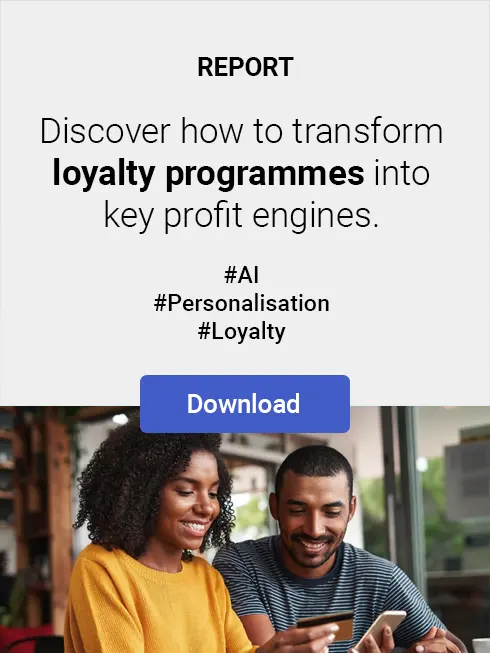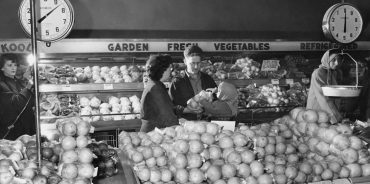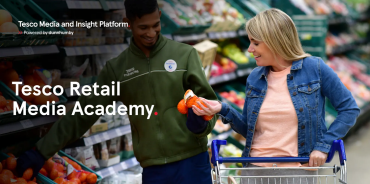How do CPGs maximise their retail media ROAS?
Today, retail media networks give retail brands a range of ways in which to engage with their customers. And while retail media is now a truly full-funnel opportunity – with touchpoints perfect for driving awareness, consideration, conversion, and retention alike – sales performance remains a critical measure for any brand or media agency.
Among the various metrics used to gauge the commercial impact of a retail media campaign, one of the most frequently employed is return on advertising spend (ROAS). In one recent dunnhumby study, for example, around half (48%) of CPGs and agencies told us that ROAS is one of their key performance indicators for retail media – the second most popular response, with only “new buyers on board” being used more often1.
With all of that in mind, let’s look at five ways in which CPGs can maximise their retail media ROAS.
- Zeroing in on the "right" people for their products
One of retail media’s biggest advantages is that it enables brands to be incredibly focused with their ads.That doesn’t happen automatically, though. Finding the “right” shoppers – those with the greatest likelihood of buying your products – means having deep insight into their prior (and predicted future) purchasing behaviours. In the main, that means brands need to partner with those retail media networks offering advanced data science capabilities and full transaction histories for shoppers.
Money spent advertising to people who’ll never buy your product is money wasted – no matter the channel. A data-driven approach to retail media is essential for any brand that wants to boost its ROAS.
- Amplifying their message by using multiple channels at once
As noted above, retail media is a full-funnel discipline, giving advertisers access to a diverse range of formats and placements. Multi- and omnichannel retail media networks make it easy for brands to get their message seen throughout the physical store, on digital properties like websites and apps, and even further afield with the likes of digital offsite advertising.Any one of those channels can deliver great results. In our experience, though, brands get the best returns from campaigns that run across several channels at once. By delivering a consistent and connected message, increasing the frequency at which it is conveyed, and using the right mix of formats, brands can deliver better results than are possible through one channel in isolation.
- Finding the golden combination with a “test and learn” approach
As evidenced by the above, the fact that brands now have more channels at their disposal is an unequivocally good thing. At the same time, with so many different formats now on offer, it can also be difficult for CPGs to know how best to reach their audiences – and which channels will deliver the greatest results against specific objectives.This is where a “test and learn” methodology can be beneficial. Because there’s no one-size-fits-all approach to retail media, brands instead need to be ready to adapt, evolve, and experiment as they look to find the golden combination of audiences, channels, and placements. By doing so, they’ll not only boost their ROAS, but limit the likelihood of repeated failure, too.
- Working the whole of the marketing funnel, not just the lower end
Today, much of the discussion around retail media focuses on its contribution to sales, and understandably so. The popularity of online grocery has soared over the past few years, and with many digital retail media products focusing on conversion –personalised offers and recommended products, for instance – the link between retail media and sales is a logical one to make.As effective as retail media can be at driving conversions, though, it’s important that brands don’t get sidetracked by sales alone; retail media plays an invaluable role in raising awareness and prompting consideration of products, too. Any brand that wants to maximise its retail media returns will need to adopt a nuanced and integrated approach that guides shoppers through the whole of the funnel.
Sales may be the defining factor by which a metric like ROAS is measured, but it’s important to remember that the path to purchase starts well before the checkout.
- Taking the long-term view when it comes to media measurement
One of the most attractive aspects of retail media is the opportunities it provides around measurement. Many retail media networks offer “closed loop” reporting – giving brands the ability to say with absolute certainty if the people who bought their products were the same ones who saw their ads. That’s a powerful capability, particularly when it comes to a metric like ROAS.That doesn’t mean that results can’t be misinterpreted, of course. ROAS doesn’t always become clear during the campaign period alone, and activities that might appear to underperform during and immediately after the campaign period, can actually have a greater impact on customer behaviours and loyalty in the longer term.
Because of that, it’s critical for brands to keep watch on long-term metrics too – lifetime values and perception shifts amongst them.
- Zeroing in on the "right" people for their products
Looking for more ways to win with retail media? Why not check out:
- The power of personalisation for suppliers
- Why AI-driven audiences are grabbing ad agencies’ attention
- Retail media: the buyer’s view
1 Retail media: the buyer’s view – dunnhumby, April 2023
TOPICS
RELATED PRODUCTS
Make Retail Media work for your business with Customer Data Science
Retail Media solutionsPlan, execute, and measure the impact of omnichannel Retail Media
Explore dunnhumby's Customer First platform for Retail MediaThe latest insights from our experts around the world
How to overcome assortment challenges? Lessons from history
Unlocking success: why agency planning teams should get Tesco retail media certified
Smart Retail: AI cheat sheet for retail execs




